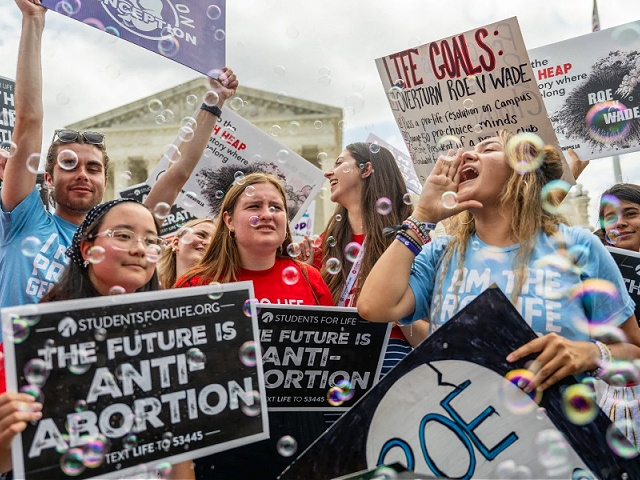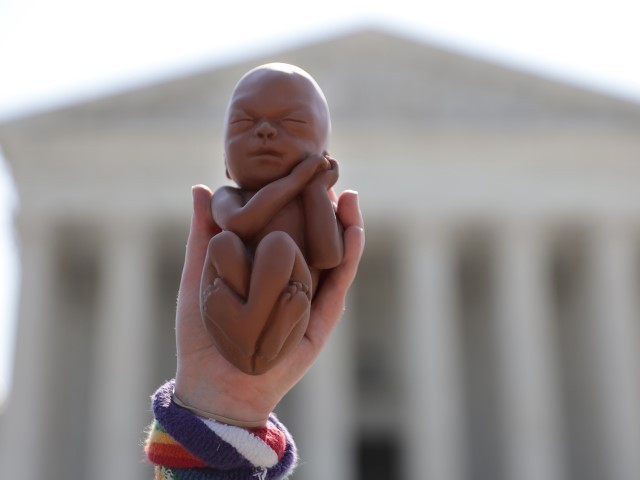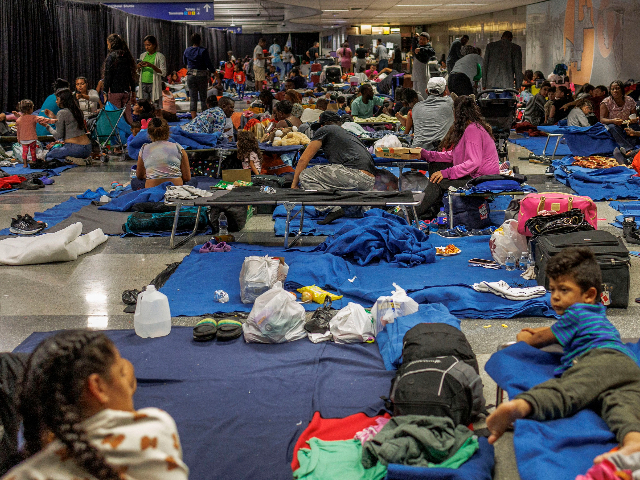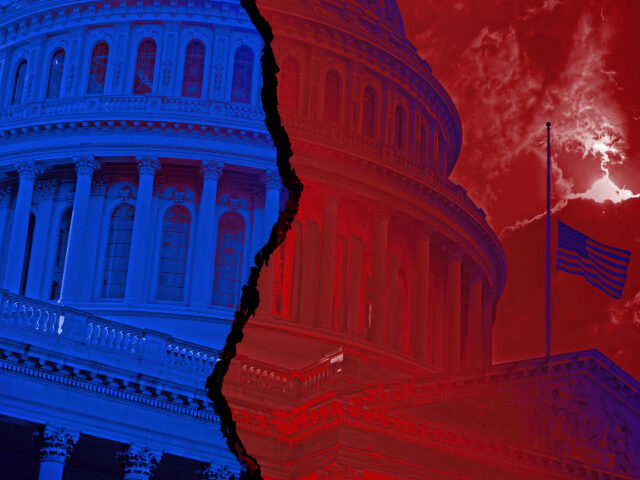Just 16 percent of Americans have confidence in the federal government. No surprise.
Looking back at this polling series by the Pew Research Center, we see that public confidence in the federal government peaked at 77 percent back in 1964; as recently as 2001, confidence stood at 54 percent. No need to rehash all the reasons for the decline, but if more than four in five Americans mistrust the federal edifice, the phenomenon is bipartisan and far-reaching.
So, what should we do?
The kernel of an answer comes from a related polling series by Gallup, which finds that Americans have more confidence in local and state government. Makes sense: In a big country—population 336 million and rising quickly—culture and belief, right to left, naturally grow farther apart. So a central government premised on “one size fits all” no longer seems like a good fit.
One notable problem of the national government is that it can be hijacked by the trendy ideological fads that afflict its capital, Washington, DC. In 2022, Congress passed and President Joe Biden signed the CHIPS Act, which allocated $280 billion to increase U.S. computer chip manufacturing. That seemed nice until Americans were jolted by a March 7 headline reading, “DEI killed the CHIPS Act.” As detailed by co-authors Matt Cole and Chris Nicholson of Strive Asset Management, the program has become so choked in woke that it is questionable whether it will lead to any worthwhile increase in American chip-making capacity. They write:
The CHIPS Act’s current identity as a jobs program for favored minorities means companies are forced to recruit heavily from every population except white and Asian men already trained in the field. It’s like fishing in all the places you aren’t getting bites.
So that is your national government in action: Maybe the 16 percent who have faith in the feds should do some more research.
In the meantime — as this author has written here, at Breitbart News — private entrepreneurs might do much more to make chips than the government ever imagined.
So it is perfectly understandable that Americans feel closer to closer governments. To cite just one issue, abortion, we can recall that the Supreme Court’s 1973 Roe decision “legislated” a liberal national regime. Immediately, the country erupted, as tens of millions of Americans objected, and conservative states began chipping away at Roe. Still, it took 49 years until the Court’s 2022 Dobbs decision reversed Roe. Then the abortion issue went back to where it had always belonged: the states.

Pro-life activists celebrate in response to the Dobbs v. Jackson Women’s Health Organization ruling in front of the U.S. Supreme Court on June 24, 2022, in Washington, DC. (Brandon Bell/Getty Images)
For its part, the Biden administration is strongly pro-choice (some would say strongly pro-abortion), yet, the federalist principle of states’ rights enabled some states to interpose and thereby protect life in much of the country. We might pause to note that the “i” word, interpose, comes from no less than James Madison, the principal author of the Constitution.
So now, two years after Dobbs, a map of the 50 states shows abortion laws mostly following the political terrain—conservative red states pro-life, liberal blue states pro-choice. Such nuance will not please purists on either side, of course, yet civil peace is now possible. Imagine the mayhem of trying to enforce anti-abortion laws in, say, Massachusetts, or of keeping open an abortion clinic in Arkansas.

(Alex Wong/Getty Images)
Let’s further keep in mind that if the states were unable to interpose themselves between the citizenry and the national government, we wouldn’t have had success in Texas. In February, the Lone Star State’s Republican governor, Greg Abbott, stared down President Joe Biden on border security. As we know, Texas is now building a wall (out of razor wire, which might have been a better and faster idea all along), so migrants are now going to Arizona and California—states led, of course, by welcoming Democrat governors.

Texas National Guard soldiers install additional razor wire along the Rio Grande on January 10, 2024, in Eagle Pass, Texas. (John Moore/Getty Images)
Thanks to the states’ rights feature of the Constitution, Americans are more likely to get the government they want—exactly as Madison intended. Unsurprisingly, the states mirror the mostly even-steven national split, red and blue. Today, the 50 states boast 27 Republican governors and 23 Democrat governors; that divide closely aligns with national political results: In the 2016 presidential contest, Donald Trump carried 30 states; in 2020, he carried 25.
To be sure, not every Republican loves his or her red governor, and not every Democrat loves his or her blue governor. (Some states are outliers; for instance, blue Vermont has a GOP chief, while red Kansas has a Dem.)
Still, we are seeing the unfolding of a national plan for advancing contentedness: people are moving to more congenial places. Bill Bishop spotted this trend two decades ago in The Big Sort. The author observed that Americans were moving, not just for jobs and opportunity, but for lifestyle and ideology. As they say, birds of a feather flock together.
We can all see this Big Sort: Conservatives are leaving Blue to go to Red, and liberals are leaving Red to go to Blue. For instance, the most controversial figure on the Washington, DC, City Council — accused of coddling crime —is arch-progressive Charles Allen, born in Alabama. Interestingly, his predecessor on the D.C. council is also from Alabama; so both men count as refugees from Red.
Speaking of local government, we can espy another locality making choices that defy national thinking—at least in the red half of the country. Chicago Mayor Brandon Johnson just announced the cancellation of a crime-detection program and further announced that city funds for migrants (still known in Red as “illegals”) would be channeled only through “black and brown” businesses.
Such policies might strike the reader as foolish and racist. If so, chances are the reader does not live in Chicago because that city elected Johnson in 2023, and the mayor before him, Lori Lightfoot, was not much better. Chicago is thus an ongoing experiment. Will the city become a social-justice paradise? Or another Detroit? Time will tell, and when it does, we will all be the wiser. Such a “teachable moment” is yet another strength of Madisonian federalism, enshrining the vision of “laboratories of democracy.”

Recently arrived migrants in a makeshift shelter operated by the city of Chicago at O’Hare International Airport on August 31, 2023. (Armando L. Sanchez/Chicago Tribune/Tribune News Service via Getty Images)
So if D.C. is gridlocked, action gravitates toward the states, where Red does its thing and Blue does its. Then what of the federal government? The feds are supposed to be neutrally governing the country, but we all know that the Deep Administrative State has taken the whip hand. That is why the U.S. Department of Education, for example, tries to dictate unisex school bathrooms and transgender sports teams. So, of course, Red recoils.
Yet here’s the thing: many blue states are actually to the left of the federal government. Illinois’ Democrat governor, J.B. Pritzker, for instance, sees his state as a “beacon” of government-subsidized transgenderism (and that T-goal keeps him too busy to worry about crime in Chicago).

People participate in the annual LA Pride Parade on June 11, 2023, in the Hollywood section of Los Angeles, California. (David McNew/Getty Images)
We could cite other issues—from recreational drugs to guns to sanctuaries to climate change—in which blue states are blazing new lefty trails. If that’s what those folks want, shouldn’t they have it? We can add a practical note: It won’t be easy to take blue policies away from Blue; indeed, as a warning to Red, if the federal leviathan is strong enough to crush Blue’s agenda, it would also crush Red’s agenda. There’s a lot to be said for agreeing to Let it Be.
Still, if we step back, we see something interesting. The federal government consumes about 22.4 percent of national GDP, while state and local spending is about 13.6 percent of GDP. In other words, it’s backward. The unpopular feds should be doing less, and the more popular states should be doing more (including, of course, cutting taxes more). The states, after all, show plenty of variety; Americans are free to sort themselves among low-expenditure states, such as Idaho, and high-expenditure states, such as New York.
We might think of the federal government as a rickety tower; on the one hand, it’s not trusted, and on the other hand, it’s too tall. So a correction—or a crash—is coming. And here’s the thing: Red has the potential to work with Blue to secure a win-win deal: Red leaves Blue alone, and Blue leaves Red alone.
Would there still be a federal government? Sure. It just wouldn’t have much to do—exactly as Madison had in mind. But if the feds did a few things well, as opposed to a lot of things badly, public confidence would rise, and the Republic would be stronger.

COMMENTS
Please let us know if you're having issues with commenting.